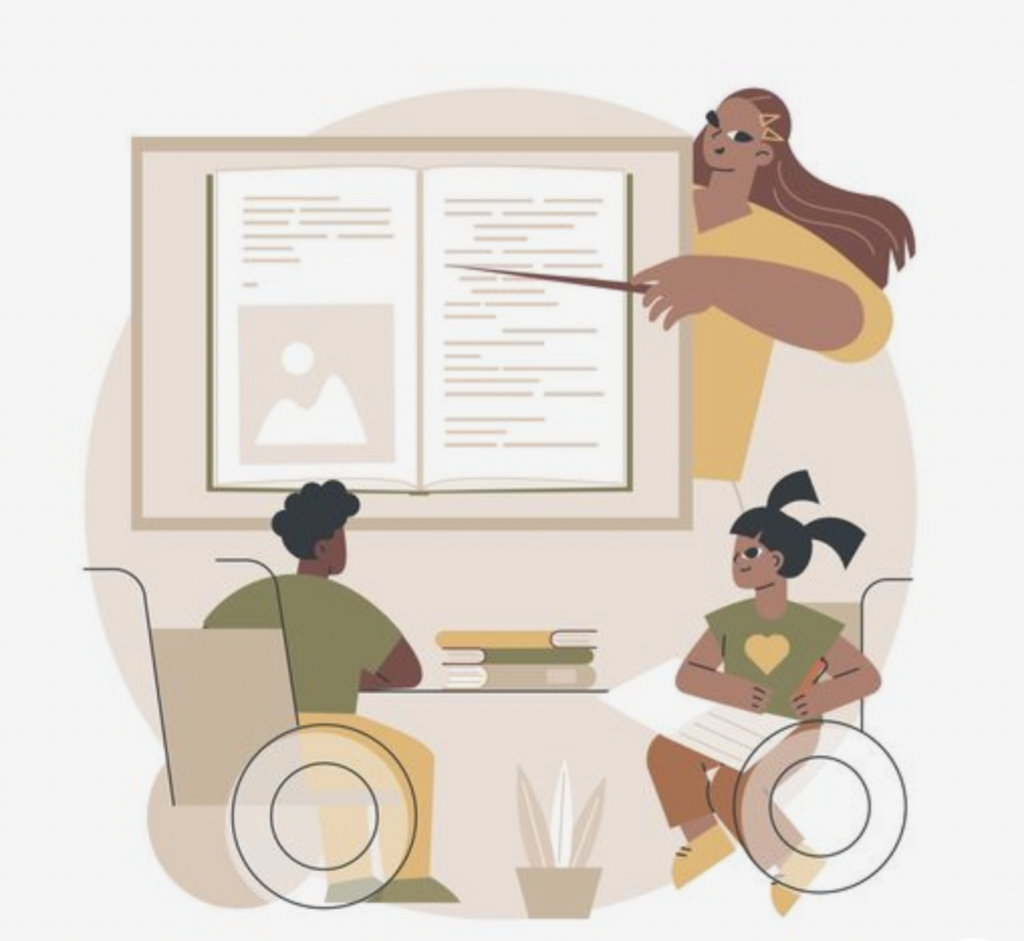See bottom of the page for optional audio recording
Hi there, welcome to my third blog post for EDCI339!

Understanding Universal Design for Learning: A Flexible Framework for Inclusive and Accessible Education
My understanding of Universal Design for Learning is that it is a framework integrated into learning environments focused on designing flexible assignments. UDL emphasizes accessible and inclusive learning for all and acknowledges that everyone learns differently. Because of this, it utilizes the idea of presenting multiple means of engagement, representation, and expression (CAST, 2018). This framework helps to create more inclusive learning environments by supporting the diverse needs of learners by offering choices in how they engage with content. It also increases Accessibility through customizable learning paths. This form of learning is highly adaptable, which is beneficial for those with learning disabilities, physical disabilities, or just varied learning preferences.

Furthermore, UDL creates an inclusive learning environment because it applies to physical and digital classrooms and can be used in synchronous and asynchronous teaching methods. This addresses geographical barriers that some individuals face that can cause accessibility issues. UDL can be used in physical and online settings by offering materials in both domains in various formats, such as audio, text, and video. UDL can also be applied by providing varied assessments for essays, presentations, projects, etc. Understanding how information can be presented and how it can benefit different people is essential. I have worked with many non-verbal children, and I know the importance of providing multiple means of communication and being adaptable in using visuals or sign language, etc. UDL embraces a similar concept and acknowledges that the one-size-fits-all approach is only applicable or helpful for a small minority of people. UDL, therefore, creates more personalized learning approaches that promote equity.
Below I have attached a video that introduces the core concepts of Universal Design for Learning. The video explains the framework that UDL provides and why this framework is beneficial for student learning.
Discover the core principles of Universal Design for Learning (UDL) in this video from CAST
Making Online Learning Accessible: Adapting Content for Diverse Devices and Learning Needs
Many elements must be implemented to make online learning accessible for all students. Accessibility in this domain ensures all students can access and interact with digital content. One element that should be accounted for when ensuring Accessibility in these settings is whether or not the content being taught is compatible with all types/brands of computers and tablets that students might own. Furthermore, it is essential to ensure that the content is easy to access for all students with and without any possible disabilities. For example, providing captioning on videos and using high-contrast text can benefit some students. Accessibility plays a role in my teaching because I work with neurodiverse children with different strengths and challenges. Therefore, I acknowledge the importance of various delivery mode options for the taught content. It is helpful to have options as a learner because if you attempt to use one mode of learning but in the end do not fully comprehend the concept that was just taught, you can utilize a different option that was also made available, and this might help clarify the initial confusion that is experienced. For example, if I read an article that doesn’t make sense, I will google a YouTube video on the same topic for an additional explanation. If these resources are linked and provided by the instructor in the beginning, time can be better spent, and more content can be covered.
Autism Nova Scotia is the organization in which I have done extensive work for with neurodiverse children. Click Here to read about their values and learn more about Autism.

Ethical Challenges in Educational Technology: Addressing Privacy, Data Security, and Equity Concerns
Educational Technology offers numerous benefits, including personalized learning and increased Accessibility. However, a short list of ethical issues has arisen in this area. Some concerns have been expressed regarding the privacy, data security, and equity of EdTech. Regarding privacy, there are concerns about how student data is collected and stored and whether or not this data is used with student consent. Data security poses another issue because educational platforms are vulnerable to breaches (Sharon, 2018). Data security within educational technology refers to the measures taken to protect student information. Finally, equity is a concern because ensuring all students have equal access to technology and high-speed internet is challenging. Equity in this setting means providing every student with the resources and support they need in order to succeed. To mitigate some of these issues and challenges, it is essential that instructors carefully choose secure and reliable platforms for online learning. Another way to minimize some of these issues could be limiting the collection of unnecessary personal data. Providing alternatives for students with limited access is also helpful in making them aware that if they need alternative measures, the instructor is available to speak with them to set these up.
Ethical Considerations in Online Spaces: Ensuring Privacy, Respect, and Inclusivity in Digital Interactions
Ethical considerations must occur when participating in any online space as a student and a teacher. First, the protection, privacy, and confidentiality of others in online spaces should be ensured. This can be done by establishing clear privacy guidelines before any discussion and encouraging users to activate privacy settings on online platforms to control who can and cannot see their content. Establishing these guidelines beforehand mitigates challenges that might arise later on. Another ethical consideration is the language used in online discussions and assignments. Language within these settings must be respectful and inclusive of everyone. These aspects are something I also consider as someone who participates in online neighborhoods. I must acknowledge the responsibility of contributing positively to group dynamics and be mindful of any biases in conversations I have or observe. Giving proper credit when sharing resources and ideas is also very important. To make sure digital interactions are inclusive, one can encourage participation from all group members and be cautious of marginalizing people using language that is not gender-neutral, for example.
The video I have attached below explains how digital human rights have become an essential focus of human rights in the 21st century. Furthermore the video advocates for the development of global frameworks to safeguard these digital human rights. Digital human rights in this setting refer to the extension of basic human rights – such as the freedom of speech privacy, and access to information (United Nations, 2020).
Enhancing University Learning: The need for Flexibility, accessibility and UDL- Aligned Strategies
In my experience, many university learning environments still rely on lectures with little interaction or flexibility. I also feel that accessibility tools like closed captioning or alternative assessments are often underused. Implementing more UDL-aligned strategies and multimedia could benefit the majority of students. Providing multiple formats for materials and using digital tools that provide accessibility is a much more inclusive approach.
Click here to listen to a podcast that features Tom Tobin as he shares his extensive experience in implementing Universal Design for Learning in higher education settings
Below I have attached a table including some of the definitions of key terms used throughout this blog post.
| Key Term | Definition |
| Accessibility | Accessibility refers to “the quality of being able to be reached or entered,” particularly in terms of usability by people with disabilities. |
| Privacy | “the state of being free from unwanted or undue intrusion or disturbance in one’s private life or affairs; freedom to be let alone.” |
| Equity | Equity refers to “the quality of being fair or impartial; fairness; impartiality.” |
| Inclusivity | “the practice or policy of including people who might otherwise be excluded or marginalized.” |
These definitions were taken from: https://www.dictionary.com/browse/accessibility
References
Autism Nova Scotia. (n.d.). What is autism? Autism Nova Scotia. https://www.autismnovascotia.ca/about-autism/#what-is-autism
CAST. (2018). Universal design for learning guidelines version 2.2. http://udlguidelines.cast.org
CAST. (2014, June 19). UDL at a glance [Video]. YouTube. https://youtu.be/bDvKnY0g6e4?si=kpJLL7t1UpU0fhw7
eCampusOntario. (n.d.). Universal Design for Learning (UDL) for inclusion, diversity, equity, and accessibility (IDEA). https://ecampusontario.pressbooks.pub/universaldesignvls/
Sharon, T. (2018). When digital platforms breach data security: A critical review of vulnerabilities and solutions. Journal of Educational Technology Research, 16(4), 23-39.
United Nations. (2020). The right to privacy in the digital age. https://www.un.org/en/digital-cooperation/right-to-privacy
Whitby School. (n.d.). Differentiated learning: Why one size fits all doesn’t work in education. Whitby School. https://www.whitbyschool.org/passionforlearning/differentiated-learning-why-one-size-fits-all-doesnt-work-in-education